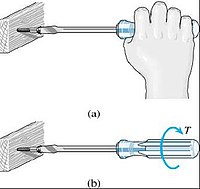
Photo from wikipedia
The aim of this paper is to discuss the potential of eye trackers as tools providing diversified support for the architectural education of future designers. The possibility to track eye… Click to show full abstract
The aim of this paper is to discuss the potential of eye trackers as tools providing diversified support for the architectural education of future designers. The possibility to track eye movement guaranteed by this group of devices enables an extension of knowledge on the non-professional perception of architectural creations. It also allows people to monitor progress while learning and verify a project’s assumptions as well as provide lecturers with an opportunity to optimize didactic methods. The paper includes authors’ ideas for modifications of teaching methods applied at technical universities. It is a result of an analysis of research related to the perception of urban designs and architectural objects—research during which noticeable differences were observed between how experts and non-professionals perceive these structures. What also contributed to the contents of this paper was a comprehension of the wide range of eye tracking studies examining the level of acquisition of specialist professional skills. The presented ideas are also based on the analysis and adaptation of eye-tracking research conducted by scientists within other areas of life.
Journal Title: Buildings
Year Published: 2021
Link to full text (if available)
Share on Social Media: Sign Up to like & get
recommendations!